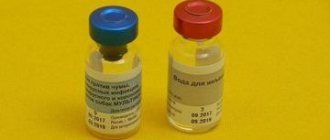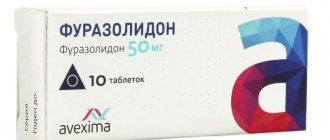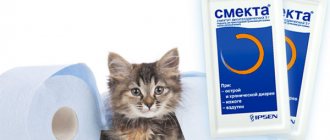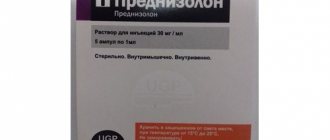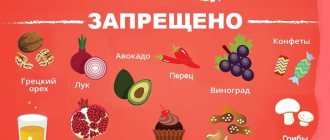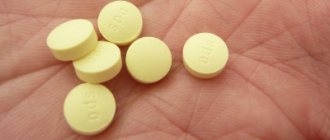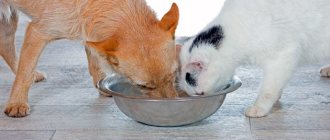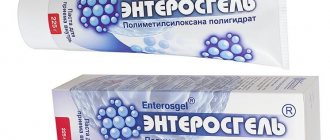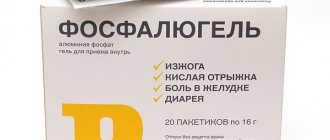The owner of any dog, at least once in his life, is faced with the need to detoxify the pet’s body. The drug Enterosgel, which was originally developed to cleanse the human body, comes to the rescue. Only after some time, it began to be actively used in veterinary medicine.
The effect of the sorbent on both people and dogs is similar. Namely, the drug fights the consequences and causes of intoxication and restores damaged organs.
Why can a dog develop stomach problems?
A dog is an animal that eats everything. This is due to the fact that in the wild, the ancestors of dogs must have time to finish catching prey before a stronger animal arrives. Therefore, they eat quickly, everything in a row and do not understand the diet. As a result, if the owner does not monitor his dog’s diet, ordinary overeating or acute poisoning may occur:
- Changing the diet (switching to another food, using human food, overeating);
- Poisoning during a walk, when the owner did not keep track of how his dog picked up something on the street (waste from a trash can, a poisonous plant, a poisonous insect, chemicals, etc.);
- Infection with helminths (intestinal parasites) – they attach themselves to the intestinal walls and release large amounts of toxins into the body;
- Digestive tract problems (colitis, pancreatitis, hepatitis, etc.);
- An allergic reaction to some substance (usually allergens that come with food).
When is Enterosgel used in dogs?
The first and main indication for giving Enterosgel to a dog is digestive disorders of various types. Let's consider all problematic situations that may arise in an animal in which Enterosgel will have a beneficial effect.
Table 1. Causes of gastrointestinal disorders in dogs
| Provoking factor | What's happening? |
| A sharp change in the usual food, overeating, the appearance of an unusual product in the diet | Like humans, animals may suffer from the inability to quickly digest food. The condition is characterized by abdominal cramps, heaviness, and decreased activity. |
| Infectious diseases | Diseases of an infectious nature such as enteritis, distemper, and rotavirus have among their characteristic symptoms diarrhea and vomiting, which already weaken the dog’s sick body. |
| Poisoning | A dog can pick up rotten or spoiled food on the street, fall for the bait of a dog hunter, and eat a truly poisoned treat. Poisoning can also be caused by an overdose of veterinary drugs, or by the dog eating or inhaling chemicals. |
| Allergic reaction | An upset stomach can be caused not only by food allergies, but also by external factors, even insect bites. |
| Worm infestation | A large number of helminths can cause dyspeptic disorders, and their waste products can poison the body. In addition, if a dog is given an anthelmintic drug when a huge number of parasites have accumulated in its body, the dead worms will release so many toxins that they can easily seriously harm the pet’s gastrointestinal tract and immunity. |
| Digestive tract diseases | Ailments such as pancreatitis, gastritis or hepatitis not only have symptomatic signs of indigestion, but also disrupt lipid metabolism in the body, causing urea to be produced at double the rate, which leads to severe intoxication. |
If the animal does not drink on its own, diarrhea and vomiting will lead to dehydration (dehydration).
How the drug works
The gel, penetrating the stomach, begins to cleanse the body of harmful toxins. Typically, such substances enter the dog’s body along with food or water. Along with poisons, the sorbent removes intestinal parasites that have settled inside the body and spread toxins.
The drug has a fixing effect, so the medicine helps with diarrhea. The drug does not in any way affect the intestinal microflora. The color of feces does not change, and the formula removes only harmful elements.
Due to the fact that it has a low molecular weight, the product helps remove the following substances:
- Poisons and toxins;
- Allergens;
- Heavy metals and salts;
- Cholesterol;
- Bilirubin.
These components are excreted directly in the urine.
Description of the drug
Enterosgel is tasteless, odorless and colorless. It looks like a jelly-like mass with homogeneous clots of different sizes. Taken orally, if necessary, diluted with water.
Enterosgel is an evolved version of activated carbon.
The drug is packaged in combination tubes of 225 grams. Tubes and instructions for use are placed in cardboard packaging. The storage temperature of Enterosgel should not exceed 30C or be lower than 4C. Shelf life – 3 years.
How to give enterosgel to a dog
For diarrhea or vomiting, the drug is prescribed for both adult dogs and puppies:
- If the dog is poisoned (the dog experiences nausea, vomiting, weakening of the body, diarrhea);
- If your dog has problems with the gastrointestinal tract (in particular colitis or pancreatitis);
- If the dog’s body is infected with parasites that release a large amount of poisons into the body, the gel is suitable for removing harmful components after deworming;
- Helps cleanse the body after a dog has suffered distemper, enteritis or rotavirus.
Enterosgel for dogs with allergies removes allergens that entered the body with food or water. In this case, the drug itself passes through the intestines and leaves the body along with feces or urine, without lingering inside.
Enterosgel dosage for dogs
The drug is given three times a day. There should be a pause of 2 hours between taking the drug and feeding.
- Breeds up to 5kg: 1 tsp. (2ml.).
- Medium breeds: 1.5 – 2 tsp. (2.5 – 3 ml.).
- Giant breeds: 1 – 2 tbsp. (5 – 7 ml.).
If the dog has an acute form of poisoning, the dosage is doubled. For a chronic course of the disease, the course lasts from 2 to 3 weeks. In case of poisoning, the drug should be taken for 3 to 5 days.
Enterosgel is given to the puppy from birth. He may have intestinal problems, resulting in loose stools. At the same time, the puppy himself may be lethargic and weak. The dosage for a puppy is half the norm for small dogs (0.5 tsp) twice a day. The drug suppresses the effects of other drugs. This must be taken into account when treating a dog.
Using the gel in dogs: benefits
As we mentioned above, Enterosgel was originally developed as a human drug intended to cleanse the body. By analogy with human medicine, veterinarians adopted the remedy. "Enterosgel" has organic silicon as its main active ingredient, acting like a sponge.
Simply put, the gel collects and attracts all pathogenic microorganisms, bacteria and toxins, and carefully removes them with feces or vomit, without affecting the internal organs. Ten to twelve hours after administration, Enterosgel is released in unchanged form.
The box of the drug states that it is effective against allergies, intoxications, poisonings and gastrointestinal infections.
If a dog has diarrhea, Enterosgel will not only help to cope with its causative agent, but will also reduce the intensity of diarrhea due to its fixative properties. At the same time, the gel has a neutral taste, it does not erase the clinical picture of the disease, since it does not change the composition and consistency of biological fluids, does not “clog” tests, and does not interfere with any studies (ultrasound, x-rays, etc.).
How to take the drug
During illness, the dog feels weak. She may even lose her appetite. This affects her external symptoms. Therefore, it will be difficult to feed her with this product:
- To begin with, you can take the gel and make several balls out of it. The formula is malleable and can change shape like plasticine;
- If the dog does not want to eat regular balls, the gel can be mixed with warm water;
- The drug can be drawn into a syringe and forcibly poured into the mouth. The syringe must be used without a needle, and to prevent the dog from spitting out the medicine, its mouth should be held;
- In order for the gel to pass quickly through the esophagus and into the digestive tract without opening the mouth, the owner must make stroking movements along the throat. This will speed up the swallowing reflex.
Excess of drug
Cases of overdose in dogs have not been reported. The instructions also do not indicate the side effects of the drug. After taking Enterosgel, nausea or constipation may occur. Therefore, after the sorbent, laxative medications are allowed if diarrhea is not observed. In case of renal or liver failure, the dog may refuse to take Enterosgel.
In this case, the drug is given to the animal by force. Enterosgel has no analogues. Other sorbents with similar effects differ in composition and can therefore cause unwanted reactions in the animal.
Side effects and complications
The gel is not absorbed into the walls of the mucous membrane and comes out along with the absorbed toxins. Consequently, an overdose cannot happen, since everything comes out without a trace. But in some cases the following complications were observed:
- constipation;
- nausea;
- lack of appetite;
All symptoms appear until the use of the drug is stopped. If the dog has been poisoned by any type of acidic, alkaline substances or one of the types of solvent, the use of enterosgel in the dog may provoke vomiting and the excreted substances will burn the walls of the esophagus. In this case, the dog must be treated using other methods.
The gel is contraindicated if the dog has:
- atony;
- intestinal obstruction;
- peritonitis;
- perforation of the intestinal wall;
- the presence of an allergic reaction to one of the components of the gel.
What to do if your dog has diarrhea
Most often, dog breeders encounter such a problem with their dog as loose stools. These symptoms only occur if the dog’s diet is disrupted or the owner has fed the dog stale food.
If this problem occurs, the dog must first be put on a strict diet. For several days she should sit only on rice water and water. At the same time, following the instructions, give enterosgel.
Considering that the drug suppresses most medications, combining the gel with other medications is strictly prohibited. This can only harm the dog. If during this time the stool has returned to normal, the dog can switch to another food. But if this does not happen, you should immediately seek help from a specialist.
In this case, the main thing is not to give up your position. When on a strict diet, a dog may pitifully ask for food. The owner must stand his ground and complete the diet. It is also recommended to keep it away from relatives or children, who might secretly treat the pet with a treat.
Diarrhea can be caused by contact with other dogs. Consequently, a virus has started in the intestines. Symptoms include high fever, vomiting, refusal to eat, coughing and sneezing. In this case, you need to seek help from a veterinarian.
Another cause of diarrhea is parasites. But the gel, in this case, removes only toxins that remain after the activity of helminths. Therefore, first you need to get rid of parasites, and then cleanse the body with enterosgel.
Never self-medicate your dog. An accurate diagnosis will be made for your pet at a veterinary clinic. Treatment is prescribed only by a veterinarian. If you do not follow the doctor's instructions, you can only harm your dog. You should never combine different drugs. The dog should recover according to one scheme.
Enterosgel is a good sorbent that has a minimal set of side effects. It is not absorbed by the body and collects all toxins and harmful substances, removing them through feces or urine. But it must be taken with caution, since depending on the diagnosis, taking the drug is very different in different cases of the disease.
Currently reading:
- Seven Signs and Remedies for Getting Rid of Fleas in Dogs
- Is it worth it or not to include natural food in your dog’s diet?
- 8 ways to treat papillomas on a dog’s body
- The American Cocker Spaniel is an adroit hunter and loyal friend.
Treatment and prevention
The main indication for the use of Enterosgel is diarrhea and diarrhea in dogs. It is important to determine what exactly causes this reaction in the body. If a dog suffers from lactose intolerance and managed to drink or eat something dairy behind the owner’s back, then his diarrhea will be allergic. In this situation, the disorder is not blocked, since the body itself removes allergens through diarrhea.
Therefore, the optimal solution would be to give the dog a sorbent that will relieve intoxication and irritation, but will not interfere with cleaning. If your dog has diarrhea regularly, this may be an indication that it has worms. These parasites cause infection. If you give Enterosgel to a dog with diarrhea, then the symptoms will stop for a while. But the drug will not solve the main problem, but will only create more favorable conditions for the proliferation of worms.
In dogs at a young age, cases of infection at a serious stage occur. If there are a large number of worms in the puppy’s intestines, tangles of worms may form. Anthelmintic drugs kill parasites, but these lumps are not always eliminated from the body on their own. Therefore, after deworming, you should give the puppy Enterosgel, which will cause short-term diarrhea.
Vomiting in a dog occurs due to poisoning, viral or bacterial infection, helminthiasis, as well as diseases of the internal organs. The dog owner should note the frequency of vomiting and its contents. This could be undigested food, mucus, blood or bile. Enterosgel should be given to a dog when vomiting as first aid.
If the symptoms have stopped, then the animal should not be fed on the first day. The dog is given only water. Next, the dog’s usual diet is gradually introduced. But in all cases you should consult a veterinarian.
Enterosgel can be given to a pet as a preventive measure if it is suspected that he has eaten something harmful on the street. Even if symptoms have not yet appeared, it is advisable to induce vomiting in the dog and then give the gel. Harmful products include spoiled food or poisonous feeders for baiting rats and other stray animals.
Diarrhea or vomiting that appears after contact with other animals is a sign of infection. In this case, other symptoms appear: sneezing, lethargy, loss of appetite, fever. These signs should promptly go to the veterinarian.
Is it possible to give?
For diarrhea, vomiting, rumbling in the stomach
Until recently, the main absorbent was activated carbon. It could be used to treat ailments in both humans and dogs. However, this drug had one, but significant drawback - it had to be used in large doses.
Enterosgel is the same activated carbon, only in a more concentrated form and in the form of a gel, rather than tablets.
This gel dissolves easily in water. It can also be consumed in its pure form, but then the likelihood of a gag reflex increases, since the gel envelops the oral mucosa and it seems as if you are trying to swallow a plastic bag.
However, most often dogs can consume Enterosgel in its pure form. Therefore, you should not immediately try to forcefully push medications into them. To begin with, try offering the dog the drug simply on a spoon. If this fails, then you need to dilute the gel in water and let the dog drink this solution.
After the medicine enters the body, it envelops the mucous membranes of the stomach and intestines and begins to collect all toxic substances.
To understand whether it is possible to treat your four-legged friend with Enterosgel, you need to determine the cause of the disease (usually the disease is diarrhea). There can be many such reasons, here is an incomplete list:
- poisoning;
- allergies to other products or surrounding objects;
- stressful situations;
- binge eating;
- development of parasites in the body.
For allergies
So, if the dog just has an allergic reaction to some product, the described medicine is most suitable.
Because it will cleanse the body of toxins and relieve irritation of the mucous membranes, but will not interfere with cleansing the body. And he needs it, because everything that caused the diarrhea must come out, and therefore is not suitable for the dog’s stomach.
As an anthelmintic
If the dog has worms and this is the cause of diarrhea, then using Enterosgel will only cause harm. Since this drug only eliminates the symptoms of worms, and it seems to the owner that the disease has been defeated.
In fact, the body develops an increasingly suitable environment for the proliferation of parasites. Therefore, if you have suspicions about the development of worms in your dog, it is better to conduct examinations and begin proper treatment.
In case of poisoning
Thus, we can conclude that it is best to use Enterosgel to treat a dog after consultation with a veterinarian, since self-prescription of medications can only distort the clinical picture of the disease and prevent the doctor from making the correct diagnosis.
But there are cases when the benefits of using the described medicine are indisputable even without consultation.
- If the dog has eaten spoiled food. Four-legged friends have a habit of burying a tasty morsel for storage. However, this may not be safe for the dog's health, especially in extreme heat. It is important to monitor what your “friend” eats; this applies most of all to residents of the private sector.
- If the dog has become a victim of poisonous baits. Most likely, they were intended for rats, mice or stray animals. Of course, such manipulation is illegal, but the fact remains. Therefore, even at the slightest suspicion of poisoning, veterinarians recommend giving the dog Enterosgel.
Other
Enterosgel is suitable not only for oral use, but also for external use. The most effective use of the medicine is if the dog has become dirty with toxic substances or petroleum products.
The drug will help relieve skin irritation in the following cases:
- dermatitis;
- flea and tick bites;
- seborrhea;
- eczema;
- combing.
If the dog scratches the skin or wound heavily and an infection gets there, it is best to lubricate the infected area with Enterosgel. Typically, in such situations, Dimexide or ointments based on it are used.
But the disadvantage of such products is that they cannot be applied for a long time. The drug we describe does not irritate the epidermis at all and is therefore suitable for long-term use.
The dosage of the drug is calculated based on the weight category. It is worth sticking to it, without reducing or increasing the amount of medicine. If the dog is quite large and needs to be given a large amount of gel, the dose can be divided into two times and taken at intervals of a quarter of an hour, no longer.
Analogs
A complete analogue of the drug is Polysorb. This sorbent based on silicon dioxide is produced by a Russian joint stock company of the same name. It is produced in the form of a powder, which must be diluted with water to form a suspension and poured into the dog’s mouth using a syringe without a needle.
Another effective analogue is the complex additive Armalit. The main component of the drug is zeolite, and the auxiliary substances are cloves, wormwood, tansy, and organic sulfur. Armalit is often prescribed after anthelmintic therapy in order to quickly remove dead worms and their waste products.
Tsamaks is a zeolite-based food additive. This sorbent helps to naturally remove nitrates, mercury, phenols, and heavy metal salts from the intestines. In addition, the drug enriches the dog’s body with phosphorus, magnesium, calcium, and potassium. The medicine is available in powder form, which can be mixed with food or diluted with water.
Enterosgel is not a panacea, but an aid!
On the Internet you can find reviews from pet owners who talk about how, with the help of Enterosgel, they cured a dog or cat from enteritis, bloody diarrhea, rotavirus or even coronavirus infection (infamous to all cat breeders, FIP). Methodologically, this formulation of the question is not entirely correct. Enterosgel does not have antibacterial and antiviral activity, does not circulate in the animal’s blood and does not cleanse it of toxins. It works only in the lumen of the gastrointestinal tract. However, this work can be very effective and significantly increase the body's resistance to a sick pet. Freed from the need to neutralize toxins in the intestines and in the systemic bloodstream, the immune system directs all its forces to fight pathogens and has every chance of success. Unfortunately, in the case of FIP, which occurs in a malignant form with ascites and damage to all organs of the abdominal cavity, as a rule, neither Enterosgel nor other detoxicants help - the prognosis for this disease is still unfavorable. Fortunately, the deadly coronavirus is not transmitted to people and dogs.
Enterosgel is ineffective for acute poisoning with caustic liquids. If an animal accidentally swallows an acid or alkali, the chemical agent must be neutralized as quickly as possible - with baking soda or vinegar, respectively, and then urgently take the injured pet to the clinic for treatment of burns of the esophagus and stomach. The PH reaction of Enterosgel itself is neutral; it does not act on caustic media.
In the same way, the gel will not help with poisoning with potent agents - cyanide, rat poison (rodenticide), garden fertilizers, organic solvents, antifreeze, etc. Here, first of all, you need to induce vomiting and gastric lavage. The easiest way to induce vomiting in a pet is to pour a 3% solution of hydrogen peroxide into the mouth. The recommended dose is a teaspoon per 5 kg of animal weight, but in emergency cases it is usually not time to take measurements; the peroxide will still come out. The main thing is to cleanse the stomach as quickly as possible and save your pet from the most dangerous poison. Only later, when the bulk of the poison has been removed, the animal can be given Enterosgel.
Operating principle
The drug Enterosgel is given to a dog in case of poisoning with toxic substances. It envelops the mucous tissues of the oral cavity and gastrointestinal tract, forming a thin, continuous film. Unlike activated carbon, the medicine acts immediately, without drinking a large volume of water.
Within a few minutes after entering the dog’s digestive tract, the gel begins to absorb all types of poisons. The porous structure of the molecules of the main substance - silicon - is capable of absorbing bacterial toxins, food allergens, drug components, and heavy metal salts. In addition, the medicine absorbs excess lipids, urea, and bilirubin.
Next, the drug easily leaves the walls of the gastrointestinal tract and is excreted from the body through the intestines. At the same time, the medicine is not absorbed into the mucous membranes, does not interfere with the absorption of nutrients, does not upset the balance of microflora, and does not change the color of stool. On the contrary, Enterosgel creates a protective layer between feces and inflamed tissues, which accelerates the healing process.
Indications for use
The drug is prescribed for the following pathological conditions of the animal:
- poisoning of the body due to poor nutrition, which provoked diarrhea;
- digestive disorders caused by improper transition to a new diet or frequent consumption of human food;
- severe poisoning, which has received chronic symptoms in the form of diarrhea and dehydration due to prolonged exposure to heavy metals, chemical compounds, and petroleum products;
- toxic infections caused by a large number of waste products of harmful microorganisms and fungi;
- infectious diseases of the intestine, provoked by various sources and occurring in the acute and chronic stages;
To small animals the drug can be given with milk.
- disruption of the digestive tract due to the use of antibacterial drugs;
- chronic poisoning caused by long-term use of any medications;
- exposure to high temperatures on the skin and the appearance of foci of infection on it, which is accompanied by symptoms of general intoxication;
- damage to the body by radiation, including chronic damage;
- the need to cleanse the intestines due to the accumulation of a large number of dead helminths after antiparasitic treatment;
- allergy symptoms of known and unknown origin;
- insufficient functioning of the kidneys and liver, usually with a chronic disorder.
It is recommended to give Enterosgel to your pet after any course of antiparasitic medication. Preventive treatment avoids complications and massive intoxication. The drug should be given 1-2 days after taking the anthelmintic drug. Some experts recommend doing this after 4-5 hours.
EnteroZoo
Diarrhea in cats and dogs is the main reason for taking Enterosgel
The drug is well tolerated by animals, but has a number of contraindications that must be taken into account during treatment:
- intestinal atony;
- intolerance to any of the components of the medication;
- poisoning with alkalis and acids;
- intoxication with cyanide and methanol;
- obstruction of the intestinal tract;
- perforation of the mucous membranes of the digestive tract.
If well tolerated, Enterosgel has contraindications
The dosage of Enterosgel is calculated based on the dog’s weight - 0.5–2 g per 1 kg of weight. If necessary, the dosage is increased.
The drug has no odor or specific taste, and therefore it can be given with food (rolled into balls) or with a treat. Some owners give the product in the form in which it is in the package. And for the pet to swallow it, they close the mouth, raise the muzzle, and stroke the throat.
But the easiest way is to dilute it in water at room temperature in a ratio of 1:3 and pour it into the cheek with a syringe without a needle. It is recommended to give Vaseline oil along with the sorbent. By enveloping the walls of the stomach and intestines, this product prevents the absorption of toxins, and already absorbed poisons are more easily excreted in feces.
The detoxification effect of Enterosgel will increase if you take the product with plenty of water. At the same time, dehydration of the body is prevented.
The drug is given to the dog 2-3 times a day at least two hours before feeding or at the same interval after meals. It cannot be combined with other sorbents. In the case of using anthelmintic drugs, Enterosgel is given after 4–5 hours to remove the toxic waste products of helminths.
Therapy for acute poisoning lasts 5–7 days, for chronic poisoning it can last up to 2–3 weeks. The sooner you start rescuing your pet, the sooner he will recover. And, of course, qualified veterinary care is desirable, and in severe cases it is simply necessary.
Enterosgel or its version for animals EnteroZoo is prescribed for the following painful conditions:
- feed and situational poisoning with the manifestation of acute diarrhea;
- digestive disorders associated with a sudden change in food, abuse of human food;
- severe systemic intoxication with symptoms of chronic diarrhea and dehydration caused by prolonged exposure to heavy metal salts, pesticides, paints and varnishes, organic solvents, petroleum products;
- toxic infections caused by the accumulation of waste products of bacteria and fungi in the feed;
- acute and chronic intestinal infections of various etiologies;
- dysbacteriosis after the use of antibiotics;
- chronic intoxication with drugs during a long course of treatment;
- burns and purulent inflammation of the skin associated with general intoxication;
- radioactive injuries, including chronic radionuclide poisoning;
- the consequences of deworming, in which a significant number of dead parasites accumulate in the intestines, during the lysis process of which toxins and allergens are released;
- allergic reactions to known and unspecified external and internal agents;
- chronic renal and liver failure.
After taking an anthelmintic, Enterosgel can be given for preventive purposes even if you do not detect the passage of worms in the feces. First of all, just because you didn't notice them doesn't mean they aren't there. Secondly, the drugs themselves, especially from the group of abendazoles and mebendazoles, are quite toxic.
For therapeutic and prophylactic purposes, Enterosgel is given in the following proportions:
- Puppies and dogs. Up to 4 kg – 1 teaspoon twice a day. 4-15 kg – 2 teaspoons twice a day. 15-50 kg – 1 tablespoon twice a day. Over 50 kg – 1 tablespoon and 1 teaspoon twice a day.
- Kittens and cats. Up to 2 kg – 1 teaspoon twice a day, from 2 kg – 2 teaspoons.
- Rabbits, nutria, ferrets, guinea pigs. One teaspoon twice a day.
- Decorative birds. Also 1 teaspoon twice a day.
The gel can be mixed with food or diluted in a drinking bowl, but it is not a fact that the pet will take the medicine in good faith. Therefore, the simplest and most effective way is to dilute the recommended dose with a triple amount of boiled water and pour it into the oral cavity through a plastic syringe without a needle, which is included in the EnteroZoo and many other liquid veterinary drugs.
In case of severe intoxication and acute diarrhea, the dose can be doubled; this should not have any side effects, although there have been cases of increased intestinal motility. In case of severe poisoning, a single dose is given to the animal every hour or immediately after the next bowel movement. Treatment in this mode continues for the first day, then for 3-5 days the drug is given 4 times a day. The general course is 10-14 days or more, until the alarming symptoms completely disappear.
Enterosgel is well tolerated by pets, but it cannot be used for atony and intestinal obstruction, peritonitis, or perforation of the mucous membranes.
In “human” pharmacies, Enterosgel is sold in tubes of 225 mg and in disposable sachets of 22.5 g. This is a dose for an adult; it is too high for animals. However, recently the drug in sachets is rare. Veterinary EnteroZoo is packaged in tubes of 100 g or sachets of 15 g (three teaspoons).
The price of a standard tube of 225 g is 350-400 rubles.
Enterosgel should be stored at temperatures from 4° to 30°C, avoiding freezing. When frozen and excessively heated, the structure of the polymer is disrupted and it loses its adsorbing properties. In winter (and in summer too), boxes with the drug are transported only in refrigerators at a set constant temperature.
Shelf life – 3 years from the date of manufacture if stored in a closed tube.
Take 1/2 teaspoon of enterosgel and dilute it with 2-3 ml of water, mix. And draw it into the syringe (without a needle). And pour it down your throat. We have been drinking it for a long time and diluting it by eye, the main thing is that it is in a more or less liquid state and the animal can swallow this muck. That’s why it’s in the throat, and not in the mouth, so as not to spit it out.
Zavatka
I have a Spitz, he ate some kind of poison on the street, diarrhea and vomiting began, there is no veterinarian 24 hours a day, the weekend is ahead, I thought he was going to die (((I took out enterosgel from my first aid kit, I had been lying around for a long time in case of poisoning, I diluted it in water and gave as much water as I could pour in poor thing. Over the weekend he already felt better, on Monday at the clinic they said that if it weren’t for enterosgel the dog would have died in two days, but we saved him.
Regina
Recently my cat quietly lapped up sprat oil from a jar and started vomiting and diarrhea. I always have Enterosgel in my first aid kit, just in case of poisoning or allergies, I decided to give it to her, diluted it with water and poured it into her mouth from a syringe, and so on three more times during the day - everything went away, the cat recovered very quickly...
Enterosgel is given to a dog for vomiting, diarrhea, nausea and other symptoms of intoxication. This condition can be caused by:
- sudden transition to another type of nutrition;
- development of infectious diseases;
- poisoning by missing products;
- helminthic infestations;
- allergic reactions.
Diarrhea and vomiting are common symptoms of diseases of the digestive tract: gastritis, enteritis, colitis, bile stagnation. Taking Enterosgel is one of the methods of complex therapy for these diseases in dogs.
It is forbidden to give Enterosgel to a dog suffering from the following diseases:
- intestinal obstruction;
- peritonitis;
- perforation of the intestinal wall;
- intestinal atony.
Allergies to the components of Enterosgel are extremely rare in dogs.
The dosage of Enterosgel for adult dogs is calculated based on the weight of the animal:
- a single serving for small pets (up to 5 kg) is 1 teaspoon;
- A medium-sized dog should take 2 teaspoons;
- representative of large and giant breeds - 2 tablespoons of the product.
Due to the absence of a strong taste and smell, pets themselves lick the gel from the spoon. If your pet is stubborn, dilute the drug with water in a ratio of 3:1, put it in a syringe, remove the needle and pour it into the animal’s mouth.
Reasons why dogs' stomachs growl
Owners rarely worry when a dog's stomach is constantly rumbling. This usually occurs due to poor diet and goes away soon. In addition to an unbalanced diet, the main reasons are considered to be eating too quickly and overeating.
Sometimes stress affects it. Then the pet experiences mood changes - apathy or, conversely, excessive excitement. The pet runs around the house, bites missing parasites out of its fur, and whines. Loss of appetite, stool disorders, and nausea are also noticeable.
Poor nutrition
Some dogs can eat almost any food and their digestive tract copes well with it. But usually pets have a weak gastrointestinal tract, and a reaction is observed to any changes.
Rumbling occurs after eating food that is not recommended for dogs. These are sweet, fried, fatty, pickled, spicy, smoked foods, fast food and semi-finished products. The symptom appears when eating foods that increase gas formation. These are beans, cucumbers, cabbage. Indigestion is also noticeable after adding new dishes to the diet, or when changing the type of feeding - instead of dry food, homemade food is given.
Haste while eating
Often dogs eat very quickly, hardly chewing and swallowing a lot of air. The reasons for this behavior are different. This could be past hunger, competition with other puppies for mother's milk, strangers or animals in the house that the dog thinks want to take his food.
As a result, after eating, the dog’s stomach rumbles, increased gas formation, belching, and bloating are observed. There is a danger that a piece of food will get stuck in the esophagus.
Binge eating
Very large portions lead to increased gas formation, hiccups, bloating, and the stomach growls loudly. In some cases, the dog begins to whine, there is noticeable lethargy and decreased activity. Sometimes vomiting occurs - this is how the body gets rid of excess food.
Dysbacteriosis
Doctors indicate that true dysbiosis is very rare. Some even doubt the existence of such a pathology. It is believed that during illness, the number of beneficial symbiotic microorganisms decreases, and pathogenic and conditionally pathogenic microflora predominate. As a result, there is rumbling, diarrhea, loss of appetite, dehydration, and stomach pain.
Dysbacteriosis is more common in dogs. They have a rather short digestive tract and intestinal microflora is poor. Therefore, dogs have an expressed desire to eat other people's excrement. They replace them with “live yoghurts”.
There are many causes of pathology. This is the use of antibiotics, corticosteroids, low-quality food, stressful situations, caustic and toxic substances, the condition after vaccination, infection with helminths. The stomach begins to grumble and even diarrhea appears immediately after eating. Almost no absorption of food occurs in their gastrointestinal tract.
Helminth infection
Parasites in the gastrointestinal tract are a common cause of health problems in pets. Commonly encountered species include worms (hookworms, tapeworms, whipworms), Giardia, Cryptosporidium, and Coccidia. They absorb semi-digested food masses. As a result, the dog suffers from a lack of nutrients.
Very little chyme remains in the intestinal lumen and a large amount of gases is formed. Worms affect this condition by releasing toxins and other harmful compounds. With excessive accumulation of gases, abdominal rumbling, constipation, and diarrhea are observed.
Poisoning
When your beloved Labrador or Spitz shows not only rumbling, but also symptoms such as diarrhea, vomiting, and excessive gas production, this indicates a high risk of poisoning. Many owners of dogs who are not very picky about food and who love to eat while walking often encounter such ailments.
It’s easy to notice that a dog has been poisoned:
- She has no appetite.
- Vomiting and diarrhea are observed.
- Rumbling in the stomach.
- Apathy, decreased activity, refusal to walk.
- Cramps.
- Shallow, difficult breathing.
- Heat.
In severe cases, symptoms appear very quickly. A newly active dog begins to feel unwell.
Intestinal infections
Any pet can have an infection in the intestines. Often this disease appears in dogs with weakened immune systems. The type of microorganism influences the course of the infection. Often your health gets worse suddenly. In addition to rumbling in the stomach, there is fever, loss of appetite, diarrhea, vomiting and other pathological symptoms.
Food allergies
Allergies are common among representatives of decorative breeds. Typically, the owner quickly identifies an allergic reaction based on the following signs:
- Redness of the skin, rashes located on the belly, armpits, under the tail, on the face.
- Discharge from the eyes - souring, increased lacrimation.
- Unpleasant odor from wool and leather.
- Digestive disorders - diarrhea, vomiting, rumbling stomach.
Manifestations vary, and they are not always observed at the same time. The most common allergens are milk, seafood, fish, chicken, eggs.
Gastrointestinal diseases
Gastrointestinal pathologies can be acquired or congenital. In the first case, they appear after previous infections. Such ailments quickly become chronic, so owners should carefully select the menu for their pet.
Dosage and duration of use
The dosage of Enterosgel for adult dogs is calculated based on the weight of the animal:
- a single serving for small pets (up to 5 kg) is 1 teaspoon;
- A medium-sized dog should take 2 teaspoons;
- representative of large and giant breeds - 2 tablespoons of the product.
Due to the absence of a strong taste and smell, pets themselves lick the gel from the spoon. If your pet is stubborn, dilute the drug with water in a ratio of 3:1, put it in a syringe, remove the needle and pour it into the animal’s mouth.
Enterosgel is given to a dog with diarrhea for 3-14 days, twice a day, until all symptoms of poisoning disappear.
Yorkie diseases for which Enterosgel is used
Yorkies (Yorkshire terriers) are small lap dogs. On average, their weight ranges from 2.3–3.1 kg, but there are much smaller (less than 0.5 kg) and much larger (5.5 kg) specimens. The height of an adult dog is 20–23 cm.
Poisoning is one of the most common ailments of Yorkies. They not only swallow toxic substances, but also lick them from their fur. Acute intoxication poses a serious danger to the life of dogs. Poisons quickly penetrate a small organism, and it is not always possible to quickly determine their origin. With a deficiency of vitamins and minerals, the situation becomes even worse.
Animals experience abdominal pain, weakness, and excessive salivation. Their pupils dilate, it becomes difficult for them to breathe, or vice versa, their breathing quickens. Vomiting of food substances turns into vomiting of mucus or mucus mixed with blood. Diarrhea in some cases is also bloody. When poisoning with sedatives or sleeping pills, symptoms such as arrhythmia and tachycardia are added. York can fall into deep sleep and even into a coma. Food poisoning dominates in frequency. Yorkies are poisoned not only by low-quality food (rotten, sour, expired canned food), but also by fatty, smoked, and salty foods.
Curious dogs swallow or lick household products, medicines, fuels and lubricants, paints, solvents, rodent and insect control products, etc. Organophosphorus compounds and thallium enter the body along with rodent repellents; with insect repellents, arsenic and phosphorus enter the body. Arsenic is also found in dyes and medicines. Only 0.1–0.2 g of this substance causes death in dogs. By licking fresh paint, a Yorkie can get lead poisoning; powder against fleas and bedbugs is a guaranteed source of DDT poisoning. The danger may come from flea collars containing insecticides - organophosphates and carbamates.
Loose stools are caused by unusual food, overeating, sudden changes in food (especially in small puppies), and inappropriate vitamin and mineral complexes.
When walking, risk factors include unsanitary walking areas, poisoned rodents, poisonous plants, berries or insects, and possible snake bites.
Diarrhea, as a rule, is accompanied by infectious diseases of Yorkies - distemper, enteritis, rotavirus. Diarrhea is a companion to diseases of the digestive system - colitis, hepatitis, pancreatitis. Pancreatitis is caused by fatty, high-calorie foods, excess weight, and increased secretion of pancreatic enzymes, which is especially typical for dwarf breeds. Diarrhea occurs with allergies, dysbacteriosis, and intestinal parasites.
General characteristics of the drug
This medicine belongs to the group of sorbents (like Smecta and regular activated carbon) . The meaning of its action is the ability to absorb and retain toxins. If we give a rough comparison, then all sorbents can be compared to “diapers”. In addition, all types of these drugs must be completely neutral: their components cannot react with gastric juice and medications.
Enterosgel fully meets all these requirements. This Soviet-developed drug is based on organosilicon compounds. Chemically, it is absolutely neutral and has a pronounced ability to bind organic molecules. The enveloping effect is weakly expressed, i.e. The drug practically does not stick to the intestinal mucous membranes.
The latter circumstance forces it to be used in combination with other drugs in cases where the epithelial cover of the intestines is severely inflamed or damaged by some caustic, toxic compounds. For this reason, the drug is not suitable for treating all types of diarrhea in puppies!
In particular, when a puppy eats some household chemicals, the product demonstrates very low effectiveness. This must be remembered, since poisoning with such substances is a common cause of severe diarrhea in overly curious puppies.
What toxins does it work best against? It is believed that the drug equally well neutralizes toxic compounds of bacterial and parasitic nature, antigens, and inorganic poisons, allergens.
The huge advantage of Enterosgel is its ability to effectively absorb and retain heavy metal salts, poisoning of which is extremely difficult for puppies. Moreover, the medicine can just as easily neutralize toxins of endogenous origin, including nitrogenous bases, excess bilirubin, and other toxic compounds.
Another advantage of the drug is its complete “insensitivity” to vitamins and minerals . However, there is no special secret in this: these substances simply have too low a molecular weight, and therefore are not bound by Enterosgel. Finally, the product does not harm the symbiotic intestinal microflora, which already has a very difficult time with diarrhea.
What about contraindications? Alas, even in this barrel of ointment there was a place for ointment: the product is well tolerated by pets of all ages and breeds, but it is strictly forbidden to use it for intestinal atony, as well as for suspected perforated ulcers. However, the presence of such pathologies in puppies is extremely doubtful, and if they are present, diarrhea is the least of the animal’s problems.
How to help a dog if his stomach is rumbling a lot?
If pathology is observed due to poor nutrition, you should review your diet and eliminate foods that cause stomach problems. If the pet is in too much of a hurry to finish the meal, a special cone-shaped plate is used. You can arrange food in a ring around an inverted container.
To avoid overeating, owners should follow a number of rules:
- Feed your dog small portions.
- Remove any leftover food after feeding. If the bowl rarely remains empty, it means your pet is getting full. In this case, the portion must be reduced.
- Food should be given two to three times a day - it is not worth transferring the animal to a single meal.
